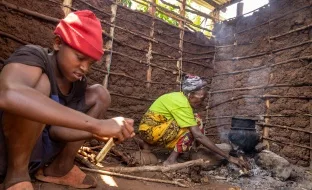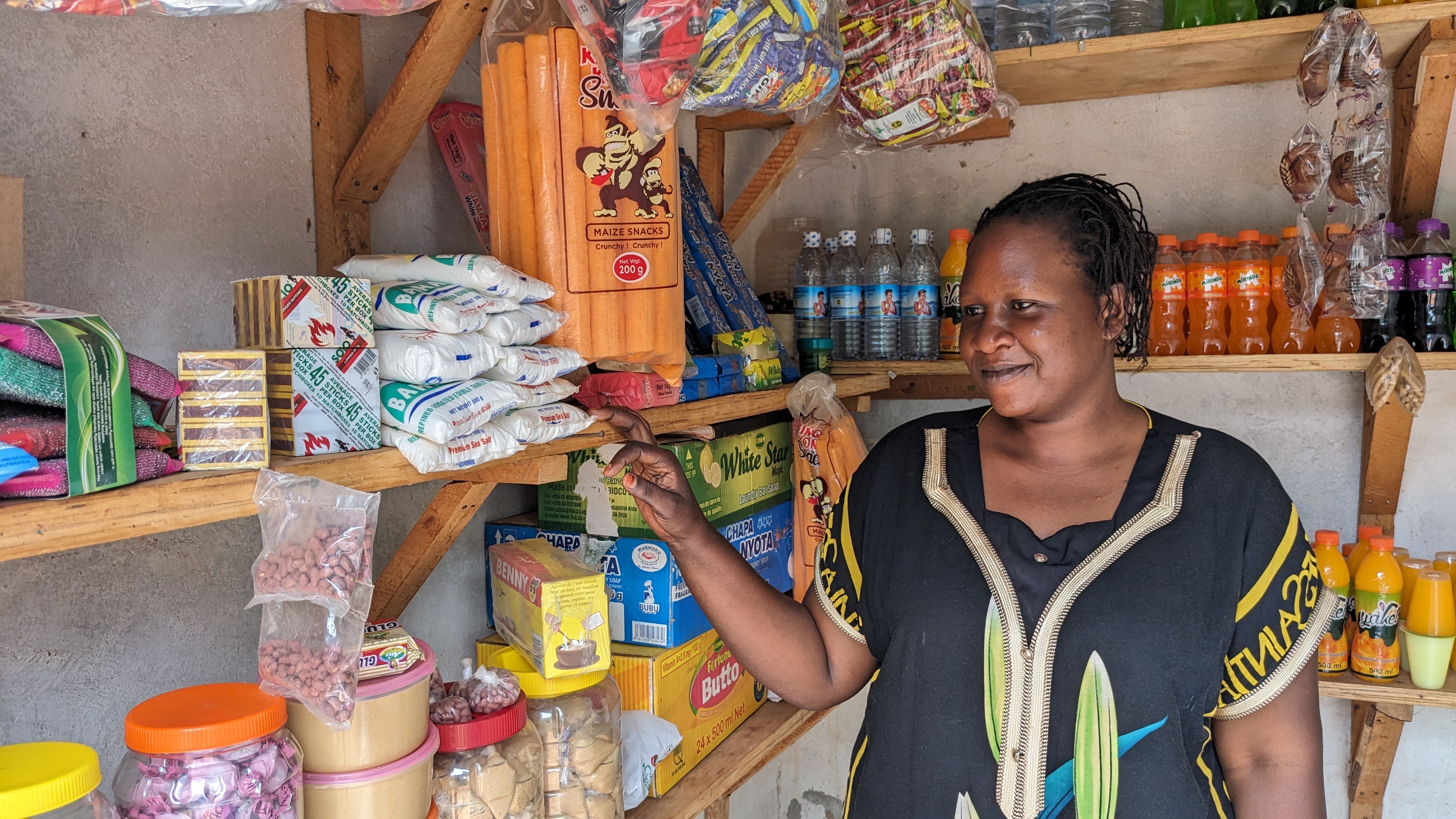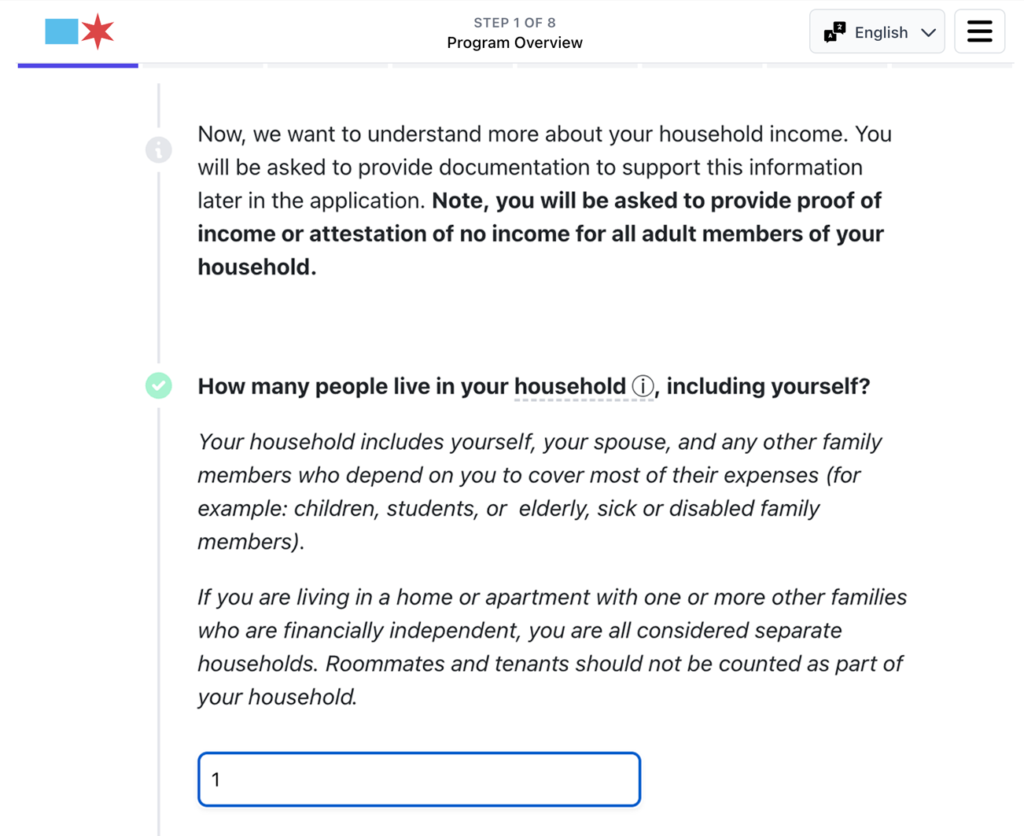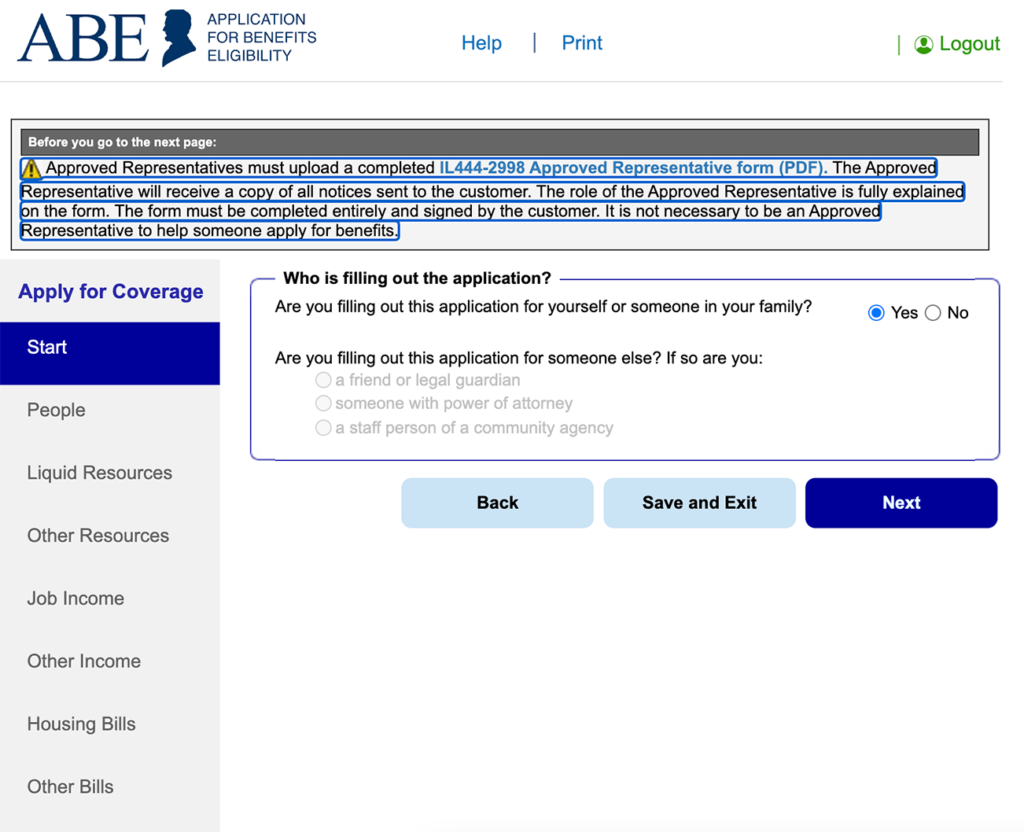U.S. guaranteed income pilots have limited funds so ultimately reject most eligible applicants. As administrators of anti-poverty programs, we have a responsibility to run an equitable and easy process both for those randomly selected to enroll and those who are not.
We launched applications for two guaranteed income efforts in Chicago and Georgia in the past month. Individually, they are both in America’s 10 largest guaranteed income programs ever – combined they’ll deliver over $43M to low-income Americans. While the relative scale is impressive, these projects are still modest in an absolute sense: a majority of eligible applicants will ultimately be rejected as spots are limited by funding. Here, we unpack design lessons from our Chicago and Georgia application design.
We built our U.S. applications to be accessible for the poorest
Georgia participants can be anyone living at or below 2x the federal poverty line (which scales with household size); Chicago participants, up to 2.5x. This qualifies a wide range – e.g. a Chicago family of four would be eligible living at $57,500/yr or, say, $11,500/yr. Ensuring folks from the bottom of this range apply requires extra consideration.
Americans in deep poverty struggle to apply for aid as only half own a computer and many lack a permanent address. Accessibility issues contribute to why over a quarter of Americans living in deep poverty (less than half of the poverty line) are not enrolled in any federal safety net program. Clearly something is wrong with the status quo.
We co-designed the application process for both our programs with our technology platform partner AidKit to limit these exclusions. AidKit is a social impact tech company working to free people from the reinforcing traps of poverty by leveraging innovation to remove barriers that prevent equitable participation in direct cash programs. The Georgia applications are still running, so sharing results from our concluded Chicago process.
Here are ways we made our Chicago application more accessible
- Pre-rollout user testing – focused on disabled & housing insecure folks and also 6 languages most commonly spoken (Arabic, Chinese, English, Polish, Spanish, & Tagalog)
- Self-attestation option – allows people without documents showing earnings a path to apply
Data-informed community outreach efforts led by the Chicago’s YWCA and promotion on local media (y en español) further bolstered the efforts.
Results from Chicago suggest this paid off:
- 64% of applicants were below the poverty line & 40% are in deep poverty (<0.5x the poverty line) – about 3x the relative citywide population for both groups
- 23% were not enrolled in any other government aid program
- 9% of applicants reported experiencing housing insecurity (homeless, recently exited incarceration, or moving frequently)
- 852 applicants applied from 64.107.3.137, the IP address at the Chicago’s main public library branch
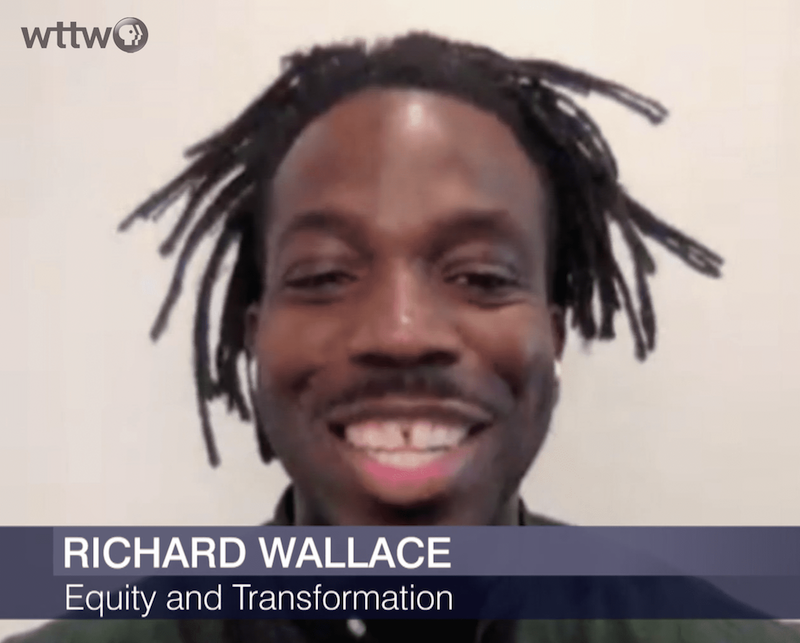
“One of our lead organizers was able to get a few of our members together to test out the application and they said that it was accessible and they said that they were eligible… for me that was the key for me to be like, ‘OK, we’re going to continue to promote this.’”
Richard Wallace of Equity and Transformation, a Chicago organization founded by & for the post-incarcerated, on PBS
Reducing application pain likely increased completion
Poverty programs often demand hours of application time and participation requirements, which writer Annie Lowrey dubbed the ‘time tax’: “a levy of paperwork, aggravation, and mental effort imposed on citizens in exchange for benefits that putatively exist to help them.”
This “tax” is levied against Americans already struggling to meet their basic needs and causes many to drop off before finishing, losing their chance to receive aid. Space-limited programs like ours can – and should – reduce barriers to apply to the hundreds of thousands of eligible applicants that will ultimately be rejected, else perpetuate the burdensome and unnecessary time tax.
To minimize the ‘time tax,’ we focused on:
- Brevity – our forms stick to the essentials and leverage logic to ask only for necessary information based on previous answers. Median completion times: Chicago (27 min) and Georgia (19 min)
- Transparency – the forms explain at each stage why we’re requesting the information to encourage patience (see below)
- Intuitive design – AidKit’s platform is first-in-class in, well, not sucking. Their cascading, single-page design reduces refresh losses through distributed systems and continuous auto-saving
During their 3-week application window in Chicago, 224.8K applications were started and 78% were completed. Only ~3% of applicants needed to call our free helpline for assistance.
Try yourself: our Chicago program vs. Illinois’s cash aid
If you’ve never applied for a poverty-relief program yourself, take a spin through ours (left) and a comparable government-run application from Illinois’s Application for Benefits and Eligibility (right):
Dig deeper with these resources
- The Guardian: I applied for LA’s basic income program – and the process was startling READ→
- Chicago PBS: More Than 100,000 Applications Started for Cash Assistance Pilot WATCH→
- I, Daniel Blake: a fictional film about a widower in the UK struggling to enroll in welfare STREAM→
Appendix: guaranteed income program comparison
Chicago: Resilient Communities
Georgia: In Her Hands
Payments
$500/mo for 1 year
~$850/mo for 2 years
Participants
5,000 households in Chicago
650 households across 3 sites
Eligibility
Anyone; up to 2.5x federal poverty line
Women; update to 2x federal poverty line
Total transfers
$30M
$13.3M
Partners
City of Chicago with GiveDirectly
The GRO Fund & GiveDirectly
Research component
Randomized Controlled Trial (University of Chicago)
Mixed Methods Evaluation (Appalachian State)
